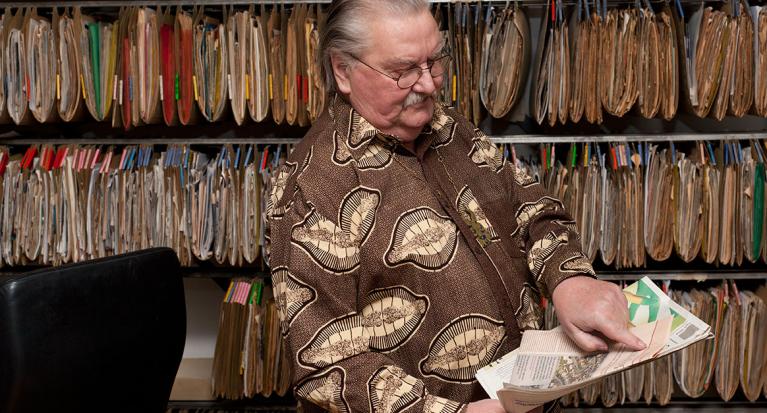The insatiable demand
Middle class consumers want meat on their tables.
The world’s hunger for meat appears to know no bounds. The production of animal protein is one of the most dynamic growth sectors in the food industry. Over the last decade, global meat production has grown so steadily – by an average of 2 per cent per year – that it appears to be following a natural law. All forecasts point in the same direction: more, more, more. By mid-century, the production and consumption(1) of meat could increase by an additional 30 to 40 per cent over current levels. According to the Food and Agriculture Organization (FAO), in 2013 global meat production reached the nearly inconceivable level of 308.5 million tons. Since 1971, meat consumption has more than tripled worldwide.
This demand for meat has not been curbed by dangerous animal diseases, scandals or panicked consumers in the affected countries. Nor has it been quelled by the debates over dwindling water and land resources or by the alarming levels of greenhouse gas emissions produced by the cattle industry. Despite the unanimous calls for meat-free days by climate scientists, animal rights activists and health advisors – and despite the horror reports about intensive livestock farming that have climbed to the top of bestseller lists (e.g., Jonathan S. Foer’s Eating Animals) – the meat market is continuing to boom, unfazed by all the criticism. But a number of changes are afoot, at least in some of the world’s industrialised nations. In the United States, for example, meat consumption has been declining markedly for a decade now, and Germany has reported negative growth for three years in a row.
The label “non-veg” has become a status symbol in India’s flourishing cities.
A look at global trends reveals a divided world. In most industrialised countries meat consumption has stagnated at an extremely high level or is falling slightly. At the same time, emerging and developing countries have reported strong growth in recent years, often in the double digits. The efforts of poor countries to catch up with wealthier ones are exemplified by meat consumption in Asia, Africa and South America. Menus are a clear indicator of where wealth is growing and new middle classes are forming. Meat is seen not only as a provider of energy and a valuable source of protein, but also as a symbol of social ascent and luxury.
As far as animals go, the pig continues to be the world’s most important source of meat. Although pork is seen as unclean in the world’s Muslim and Jewish communities and is thus not purchased by a large group of consumers, it nonetheless accounts for almost 40 per cent of the meat produced worldwide. Global pork production reached 114.3 million tons in 2013, with almost half (55.7 million tons) coming from China. The per capita consumption of pork by the Chinese set a new record in 2013 – an impressive 31.3kg – and so for the first time passed EU consumption of 30.86kg.
But it is poultry, especially chicken, that is experiencing the most rapid growth. Poultry is also the cheapest of all meats. Since 1960, global poultry production has increased by a factor of ten – pork, in contrast, “only” by a factor of five. Currently 107 million tons are being produced each year worldwide.
Beef, on the other hand, continues to be the meat of the wealthy. The most expensive of all, it is eaten primarily in the old industrialised world. Argentina and Uruguay, both of which are large producers of beef, are notable exceptions with an extremely high per capita consumption of 41kg. People in both these countries eat large quantities of beef, mostly in the form of grilled steaks.
Musicians and entertainers like Jay Z and Beyoncé are taking three-week vegan challenges.
Of the massive amounts of meat being produced worldwide, the newly industrialised countries are consuming an ever greater share. At the top of the list is China, where per capita meat consumption increased to 48.7kg in 2013. Ten years ago (2004), it was 39.1kg. Here and elsewhere, US fast-food chains are exerting a culinary influence. Generous servings of meat are part of a new lifestyle. And China is not alone. According to the FAO, the developing countries of Asia and Africa have for the most part seen meat consumption more than triple in the last 50 years. At the same time, though, consumption remains relatively modest compared to the rich industrialised nations. In Africa as a whole, average meat consumption is just 11.7kg per person and it is much lower in the continent’s poorest countries. Ethiopians, for example, eat only 4.9kg of meat a year, the Sudanese 5.9kg. Per capita meat consumption in India and Bangladesh is significantly lower, at 3.5 and 3.1kg, respectively. Both countries have a vegetarian tradition as well as high levels of poverty. Many people do not eat meat because they simply cannot afford it.
To ensure a sufficient intake of essential nutrients and eliminate malnutrition worldwide, the FAO recommends that people eat at least 20g of meat a day, which translates into 7.3kg a year.But it is not only consumption patterns, but also meat production that is changing. The world’s largest meat processing company no longer comes from the wealthy Global North, but from an emerging nation. The Brazilian JBS Group slaughters 90,000 cattle and 8 million chickens a day, generating annual sales of 23.5 billion euros. To do so, it employs 125,000 people and operates 134 plants in 10 countries.
Leaving aside the tiny state of Luxembourg, the United States continues to be the world’s largest per capita purchaser and consumer of meat, with the average person eating 91.1kg per year. A closer look at the statistics shows that US men eat much more meat than do US women, a pattern also seen in Europe. However, it is in the United States, of all places, where a large juicy steak is considered a human right, that the vegetarian movement is gaining new momentum. Musicians and entertainers like Jay Z and Beyoncé are taking three-week vegan challenges, and the influential pastor Rick Warren has called on his compatriots to eat only fruit and vegetables. Following in the footsteps of ex-President Bill Clinton, former Vice-President Al Gore has revamped his diet and for starters bid farewell to the Thanksgiving turkey. And popular talk show host Oprah Winfrey went vegan for a week along with 378 of her staffers. The situation is the same in Germany, where vegans and vegetarians are increasingly calling the shots, and meat eaters are promising improvement and reducing the size of their portions in an attempt to ease their consciences.
Nevertheless, most people are still buying their meat cheaply in supermarkets. Price is all that counts. Organic meat is only a tiny niche market. When it comes to pork – the most important source of animal protein in Germany – organic products do not even account for 1 per cent of total sales.
(1) Meat statistics are often confusing because they compare apples to oranges. It is crucial to distinguish between meat produced and bought, and what is actually consumed. The latter category refers to the amount of meat that makes its way into consumers’ stomachs, whereas the former designates gross weight, including all waste products such as bones, tendons and hoofs. This amount is roughly 1.4 times greater than the amount of meat actually eaten.
DOSSIER Globalisation and Development |
| We can feed the world … | |
| World hunger | |
| The insatiable demand | |
| All dossiers | |
Collecting chickens for slaughter.
The video presents a six-minute excerpt from Ron Fricke’s 2011 documentary Samsara and provides a glimpse of the industrial production of meat and the world of consumption today. Samsara was shot over a four-year period in 25 countries around the world. barakasamsara.com
Each year the Heinrich Böll Foundation, BUND and Le Monde Diplomatique publish Meat Atlas: Facts and Figures about the Animals We Eat
Trends in meat production


